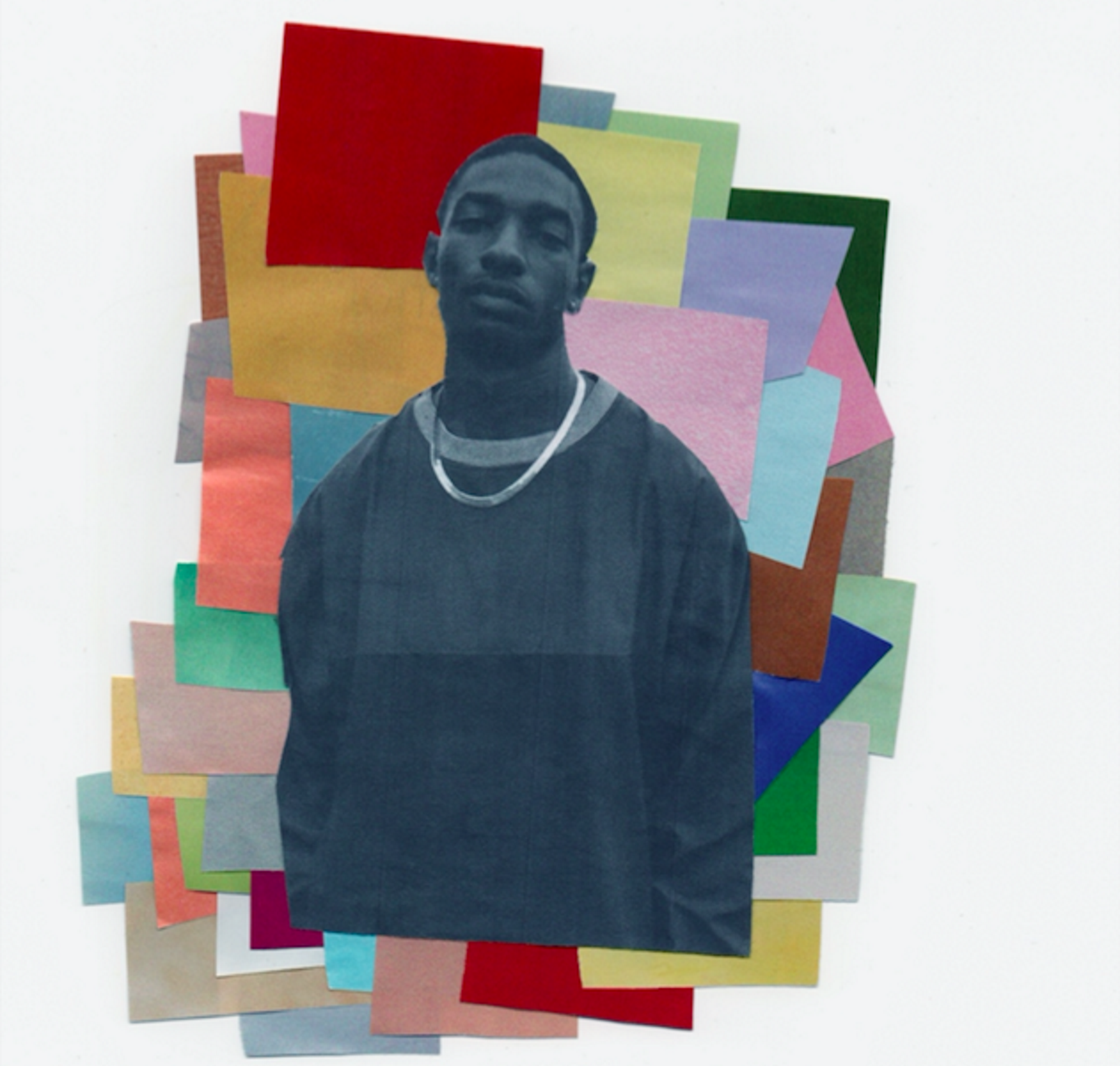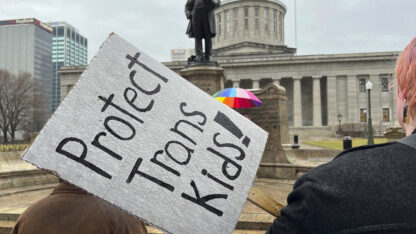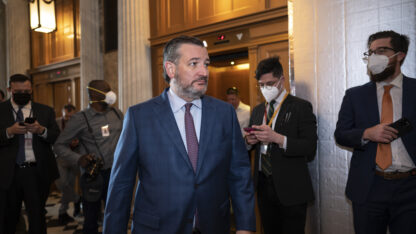By Jabari Courtney
The first gay character I remember seeing on TV was Brian’s cousin, Jasper, on the television show “Family Guy.”
Jasper was a flamboyant and sassy dog who always wore short shorts and constantly went out clubbing. I was too young to make sense of the jokes that “Family Guy” made, but I eventually realized that Jasper, like many other characters on the show, was a stereotype of gay people.
As I became a teenager and learned more about my sexuality, I saw the same kinds of stereotypes of gay men in the endless movies and TV shows I watched.
I was disappointed to find similarities in all of their stories that each involved clubbing, drama and sex.
The stereotypical gay character was an overdramatic, sassy, shopaholic and accessory to straight women. Gay men were reduced to a single type of character.
Those limited portrayals had long-lasting consequences for how I saw myself.
When I was younger, I thought I couldn’t be gay, as I wasn’t like the men I saw on TV. I grew up ignoring and dismissing all the feelings I had because I didn’t fit the mainstream depiction of a gay male.
Thoughts raced through my mind: I can’t be gay because I wasn’t quick with a comeback. I can’t be gay because I didn’t like fashion. I can’t be gay because I didn’t have a girl best friend.
Down the line this had impacted me and my struggle to be comfortable with myself.
When I finally began to accept my sexuality, I had a new conflict within. More questions arose: Am I gay enough? Why do I act like this? Why can’t I just fit in with all the other gay dudes?
What I saw on TV forced me to ask myself one question above the rest: Why can’t I just be straight?
From a young age, I found myself to be a person with diverse interests: I liked cartoons and rap music. I liked hanging out with my friends, but given a choice, I would have stayed by myself. I liked playing video games, but I hated playing video games with other people because I would always lose.
I thought the idea of fashion was cool, but I preferred dressing more “comfortably.” My typical outfit consisted of an oversized hand-me-down hoodie, baggy jeans and Converse that have been worn to the soles.
I never felt like I fit into a single box.
And when I came out, I certainly didn’t fit into the box TV offered me.
Coming out felt like I had to take bits and pieces of my identity and throw away the parts that didn’t fit in the gay black teen box.
I believed that if I only took the parts of myself that somewhat fit the TV’s formula, I would assimilate into gay culture and be happy with my life.
I was completely wrong.
Coming out was one of the darkest periods of my life because I was constantly rotating pieces of myself to fit the “gay model,” and it took a toll on me because I was cutting off parts of myself who made up who I was.
This time period felt like a constant battle fighting who I am and what I am “supposed to be.”
I thought I had to “fit the description” in order to be accepted by the gay community. I would constantly torture myself thinking I wasn’t “gay” enough and that I had to change who I was to blend in.
I slowly began to change my mannerisms, style and taste to fit what I saw on TV, but it didn’t last because it was clashing with who I really am.
Growing up in the digital age, representation is important to all human beings. There is a natural desire to see a reflection of yourself to validate your identity and make you not feel alone.
Every gay man or person of the LGBTQ+ community experiences the feeling of wanting to belong after being shunned by the world for their sexuality or identity.
Many new shows and movies are creating characters with real storylines that project this experience for LGBTQ+ teens and people to see and understand that they’re not the only one on that path in their journey to finding themselves in a world that already denies who they are.
A couple of months after I came out in 2017, the Netflix show “Dear White People” approached gay characters in a way I haven’t seen before.
“Dear White People,” a show based off of the movie that was released in 2014, follows the experience of black college students who attend a predominantly white college. The show tackles topics such as: abortion, PTSD and homosexuality.
When the TV show debuted, I paid close attention to the story of Lionel Higgins, a gay black man who was one of the show’s main character.
Naturally, I assumed the worse and thought they would alter his characters to assimilate to the rest of the other gay TV characters.
I was wrong.
Lionel was an awkward, nerdy, introverted and “comfortably dressed” character, adorned in older clothing and baggy pants. His character type was completely oppugnant to the same gay character I saw in every show and movie.
These uncommon personality traits in his character for a gay man drew my attention even closer to the screen.
Instead of taking the safe route and discussing the relationship between the gay and straight communities, the show took an introverted approach and looked at the relationships within the gay community itself.
In Season 2, we see Lionel attempting to find his place in different subsets of the broader gay community. In the show, they displayed groups such as the “Black Gays,” the “Writer Gays” and the “Theatre Gays.”
Even after coming out, a lot of gay men struggle with finding their identity in both the world and gay community.
This was a perspective I have only experienced and never seen until now.
Watching Lionel’s own personal journey to finding himself reminded me of my own and showed me that I don’t have to be a particular kind of gay person. There are a variety of people in the community with different personalities, ideas and beliefs.
New gay male characters in the media exemplify this concept, and their characters too won’t follow the rules.
Characters such as Damon Richards, from the FX TV show “Pose”, who is a passionate and strong teenage dancer who was kicked out of his house after his parents discovered he was gay; Jamal Lyon, from Fox’s “Empire,” an inspired and caring singer who comes from a family of successful musicians; Chiron, from the Oscar-winning “Moonlight,” a resilient teen who exemplifies one of the many journeys of a gay man; Lafayette Reynolds from HBO’s “True Blood” is charismatic and caring, however, he is tough and brutally honest.
These fictional characters each have a different story, however, they all have diverse and real personalities and stories that gay black people can identify with.
The effects of constant stereotypical gay characters in the media causes gay youths to feel as if their sexuality must dictate who they are as a person, when, in reality, sexuality and personality are two separate things.
Jabari, 17, is a junior at Banneker High School who enjoys watching documentaries about different people’s lifestyles.
VOX-A-Palooza

To register for VOX-A-Palooza, click here
This story was published at VOXATL.org, Atlanta’s home for uncensored teen publishing and self-expression. For more about the nonprofit VOX, visit www.voxatl.org.








